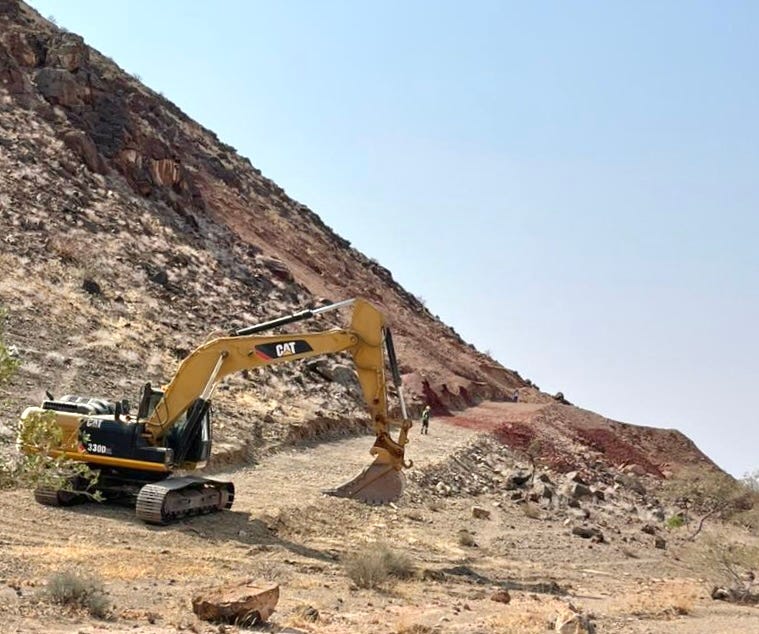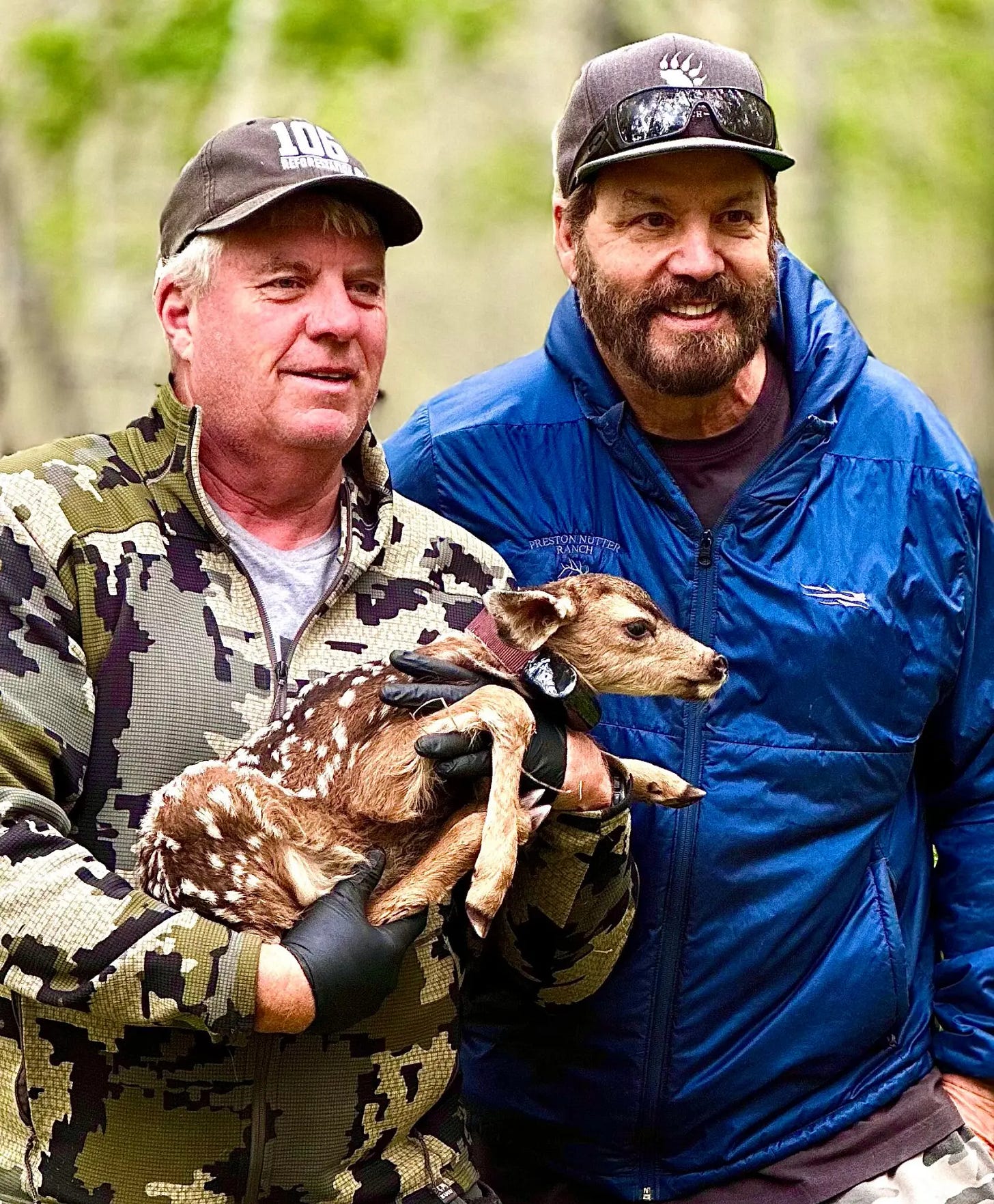NAMIBIA EATS ELEPHANTS, TRADES RHINOS FOR TIN
And in Utah, taxes pay for a Forest Apocalypse playground
by Richard Conniff
Namibia, an arid nation on the southwest coast of Africa, has been making headlines lately for culling elephants and other wildlife now struggling through a prolonged drought. Government leaders say they’re doing it primarily for meat to feed rural people, whose normal food supply has been jeopardized by the same catastrophic drought and extreme heat. (Zimbabwe is considering a similar plan.)
Environmentalists are calling it “a colossal disaster” driven by election politics rather than by ecological good sense. But if it’s a disaster, it should at least be a short-term disaster.
What worries me more is the increasing willingness of Namibia’s political leaders to to do long-term damage by selling out that nation’s hugely successful system of community governance of natural resources.
The winners in the new political scheme are mostly foreign logging, mining, and drilling interests whose projects permanently disfigure the land. The losers are the people and wildlife living there. Often, the first thing the communities who manage the land hear about these deals is the sound of heavy machinery bulldozing outside their doors. Corrupt government officials likely pocket bribes to make it happen.
This is particularly disturbing because Namibia formerly made a reputation for its pioneering environmental policies, and for putting 20 percent of its land area under the direction of community conservancies run by the subsistence farmers living on that land. Another 17 percent of the land area went into national parks.
The conservancies have developed local economies based on wildlife tourism. They made deals with sightseeing lodges and, at a discrete distance, with trophy hunting outfitters, earning a share of the profits from both, as well as employment for local people. Harvesting wildlife for meat—mainly springbok, gemsbok, and zebra—has also always been part of the plan. (Putting elephants on the menu, and raising quotas in the middle of a major drought, account for the current headlines.)
All three forms of exploitation followed national sustainability guidelines. Wildlife populations soared as a result — tripling the elephant population, for instance, and almost doubling the number of mountain zebra, even as wildlife sharply declined elsewhere in Africa.
But Namibia has taken a bad turn lately, as the dominant SWAPO political party plays out its thirtieth year in relatively unchallenged power.
In the latest case, people living around the arid northern community of Khorixas looked out one morning last month to find a new road being bulldozed through an area they had been managing, together with the tourism company Ultimate Safaris and the nonprofit Save The Rhinos Trust, as habitat for black rhinos, an endangered species.
The conservancies, together with the tourism company, went to court, alleging that the road, and mining project it will serve, showed up on the scene “without any consultation” with them. They argued that heavy machinery and blasting for open pit mining of tin and other metals will push black rhinos out of the area. Experience elsewhere in Namibia suggests mining workers, often brought in from China, are also likely to accelerate poaching for the rhino horn trade.
That matters because Namibia is home to almost a third of the 3500 black rhinos remaining in the world, and most of them live outside national parks, under the protection of conservancies like the ones around Khorixas. It also matters because the partnership between the tourism company and the conservancies has become the basis for the local economy.
Ultimate Safaris currently operates two tourism camps in the area, with a third lodge for high-end travelers currently in development at a cost of US$1.7 million, all of them “solely focusing on rhino tourism.” The three lodges will provide 70 jobs (up from 40 now) and produce upwards of US$170,000 annually in cash payments to the conservancies, according to the company.
The court temporarily stopped the road building. But last week more heavy machinery showed up to resume work, in apparent indifference to the court’s authority. The road building also disregards the mining claim holder’s own assurances, in an environmental impact statement, that it would establish no new roads “due to the ecological sensitive [sic] of the area.” If road works continues, it’s likely to cross 20 kilometers of rhino habitat, leading to a series of open pit mines.
The same environmental impact statement says the mining will continue for 25 years, removing 1000 tons of ore for export to the international market. It will employ 150 people, but with no guarantee that any of them will come from the local community. The resulting “pits and heaps of rock and sand” will be “visually unpleasant and compromise the aesthetic of the area,” to the detriment of “the affected parties.” Destruction of breeding and nesting sites will also “have a negative effect on bird life.”
It’s hardly a pretty picture for the community conservancies that may well have to endure it. It’s also becoming a familiar sort of disaster for tourism companies in Namibia. Just three years ago in the nearby //Huab Conservancy, a Chinese company fronted by a Namibian national began mining for low-grade copper, without warning to the local community. The rhinos soon abandoned the area, and the tourism operator—Ultimate Safaris, again—had to close down its lodges, depriving the local community of jobs and their share of profits from a sustainable business.
It’s a sad development. Soon after winning independence from the apartheid government in South Africa, the former SWAPO freedom fighters made their new nation a model of environmental and economic good sense. Now the heirs to the party’s political power seem interested only in grabbing whatever cash they can lay their hands on, no matter the cost to their country or its people.
A national election for a new president and general assembly will take place November 27. Maybe it’s time for voters to SWAPO a message.
RICH GUY GETS UTAH TAXPAYERS TO PAY FOR HIS FOREST APOCALYPSE PLAYGROUND
Randomly cutting down great swaths of forest is “kind of like going in and removing cancer from a body,” the chief executive of a medical accounting company told Utah legislators. That’s about as close to a scientific basis for his logging proposal as the longtime Republican donor Mike Siaperas got. But it was enough, according to an investigation by the The Salt Lake Tribune and The New York Times, for the Republican-dominated legislature to spend millions of Utah tax dollars for Siaperas to cut down hundreds of acres of forests on his own and neighboring ranches.
The state also paid for him to cut down forests on 276 acres in the adjacent Cold Spring Wildlife Management Area—in apparent disregard for the primary purpose of such wildlife management areas, described on a state website as “conserving critical wildlife habitats.”
From his taxpayer-funded experience, Siaperas developed and patented a “roller felling” device. (I’m sorry, this will seem like a crazy parody, something Donald Trump would make up and consider a tremendous idea—but … ). According to investigative reporter Leia Larsen, the roller feller consists of “a cable strung between two bulldozers. A 10,000-pound [rolling] barrel in the center keeps the cable suspended four feet high so it doesn’t catch on stumps. The process uproots everything in its path,” at a rate of 100 acres a day.
Less like cancer surgery, more like a guillotine for forests.
What is Siaperas’s problem with forests? When he bought his 1200-acre property, at 10,000 feet on the West Tavaputs Plateau in eastern Utah, “You couldn’t see 10 feet in front of you,” he said, in a podcast, “the trees were so overgrown. I wanted to see wildlife.” His rationale, according to The Times, “was that cutting down trees would fight drought by reducing water-guzzling conifers” and “improve the habitat for trophy animals that draw hunters, whose licenses generate state income.”
“To me,” said Ben Abbott, an ecology professor at Brigham Young University, “it looks like nothing more than a pet project with a thin veneer of science.” Even so state legislators have appropriated more than $5 million so far for Siapera’s forest apocalypse.
According to The Times, “the funding is part of a pattern of questionable contracts the state — led by a Republican governor and a legislature with a Republican supermajority — has awarded over the last decade to politically connected people pushing moneymaking projects they claimed had ecological benefits.”
If you want to see roller felling in action, check out Siapera’s time lapse video on youtube. It will make you weep.






